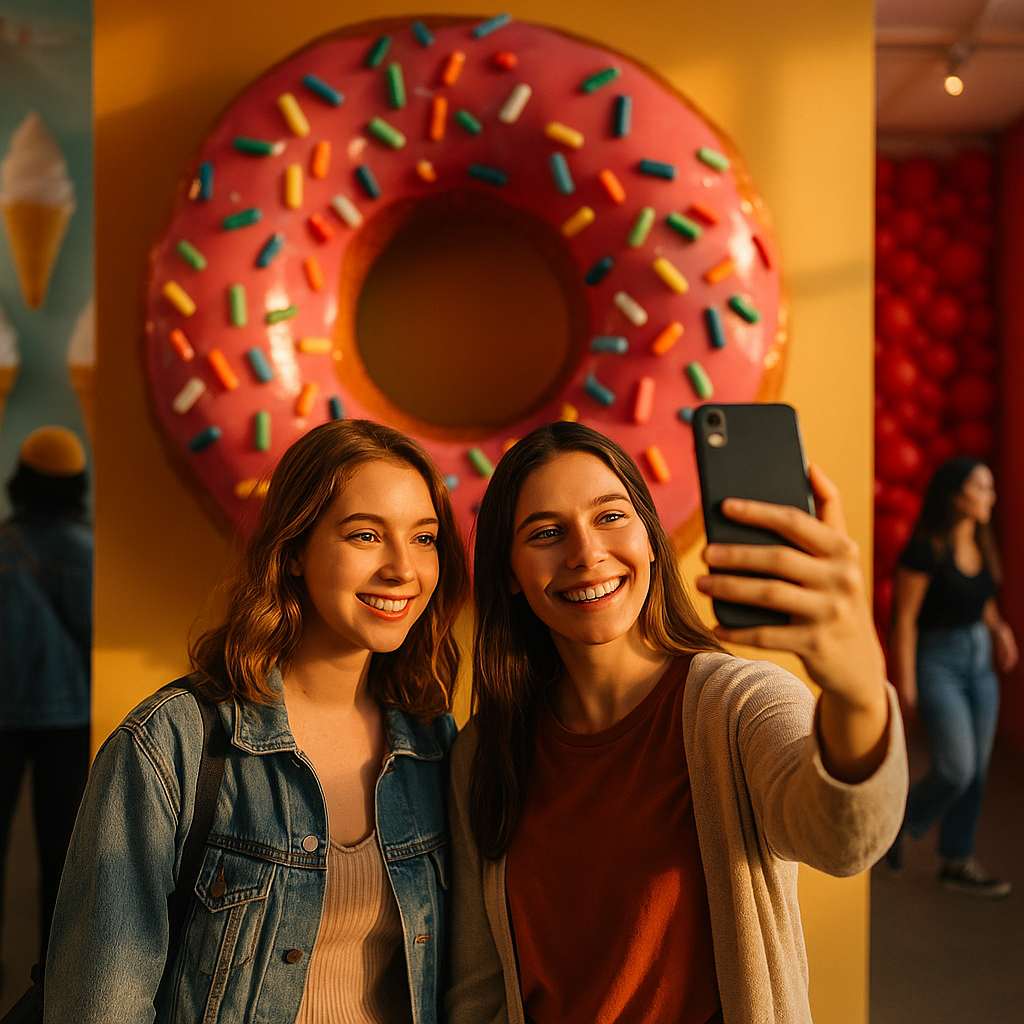Discover how a brand harnessed the power of a pop-up museum for viral marketing success. Learn the creative strategies, data-driven results, and actionable insights behind this innovative campaign. Whether you’re a marketer or brand founder, this case study reveals how pop-up activations can create buzz and lasting engagement. Ready to find out the secrets to this unforgettable experience?
Leveraging Experiential Marketing: The Pop-Up Museum Advantage
Experiential marketing has experienced exponential growth, with brands prioritizing real-world engagement to foster deeper connections. In 2025’s crowded digital landscape, consumers crave authentic experiences. A pop-up museum delivers precisely that by immersing visitors in a brand story, turning passive observers into active participants. This hands-on approach not only generates excitement but also inspires organic sharing across social platforms.
By integrating physical interaction and creative storytelling, brands convert fleeting interest into viral enthusiasm. Data from Event Marketer (2025) reports that 78% of consumers are more likely to purchase after participating in branded activations. A pop-up museum doesn’t just create memories; it turns attendees into brand advocates and content creators, fueling viral spread beyond the event itself.
Designing an Immersive Brand Experience for Shareability
The brand’s pop-up museum was strategically crafted for maximum shareability. Every exhibit was designed to blend brand storytelling with visual spectacle. Instagrammable backdrops, interactive installations, and AR-enhanced displays encouraged visitors to capture and share their experiences. A clear branded hashtag was prominently displayed, ensuring consistency and amplifying reach.
Design elements considered visitor pathways, queue management, and sensory engagement. The museum incorporated immersive soundscapes, tactile installations, and smell zones tied to product lines. Staff members, dubbed ‘brand guides,’ facilitated interaction, answered questions, and collected live feedback. These thoughtful touches ensured the event felt tailored and memorable, increasing visitor dwell time and content generation.
Driving Virality with Influencer and Community Collaboration
To amplify reach, the brand partnered with micro-influencers and community leaders relevant to its target demographic. Days before the pop-up launch, an exclusive preview event was hosted for local creators and tastemakers. Their early content seeded anticipation and trust, turning the museum into a citywide ‘must-visit.’ Influencers received custom kits to unbox live on their channels, further feeding the viral loop.
The brand also tapped into local art communities, commissioning original works inspired by its story. These community-driven collaborations fostered goodwill and broadened attendance beyond typical customers. By centering influencer and community involvement, the pop-up’s appeal spread organically, making it a trending topic across major social platforms within 48 hours of opening.
Measuring Success: Data-Driven Results and Social ROI
Robust measurement was integral to the campaign’s strategy. Sensors and QR codes throughout the museum captured dwell times, exhibit popularity, and participant demographics. UTM-coded links and branded hashtags enabled detailed social media tracking. Within the first week, the pop-up generated:
- 320,000 organic Instagram impressions using the official hashtag
- 16,500 unique social media shares across TikTok and X (formerly Twitter)
- 18% increase in e-commerce sales tied to campaign-exclusive offers
Post-event surveys revealed a 92% satisfaction rate, with 70% of participants indicating they discovered the brand for the first time at the museum. Not only did this translate to viral awareness, but it also produced compelling user-generated content for future campaigns.
Adapting Lessons: How Other Brands Can Replicate Viral Pop-Up Success
This pop-up museum case provides a replicable blueprint for brands aiming for viral marketing impact. Key strategies include:
- Center the consumer journey—shape exhibits to tell a cohesive and interactive brand story.
- Make it effortless to share—design for visual appeal and encourage visitors to post on social media with incentives.
- Involve local communities—partnerships with creators and artists extend reach and authenticity.
- Invest in measurement—track visitor engagement and campaign ROI in real time to demonstrate value.
Brands should adapt elements to their target audience, location, and budget. Mobile pop-ups can reach regional markets, while digital overlays can extend engagement beyond physical attendees. The core lesson: pop-up museums thrive when there’s equal focus on experience quality and planful amplification.
Frequently Asked Questions: Pop-Up Museums and Viral Marketing
- What is a pop-up museum in marketing?
A pop-up museum is a temporary, branded experience designed to immerse visitors in a brand story through interactive exhibits. It drives engagement and encourages organic social media sharing, boosting brand awareness. - How does a pop-up museum drive viral marketing?
By offering share-worthy, unique experiences, pop-up museums motivate attendees to post on platforms like Instagram and TikTok. Strategic influencer partnerships, branded hashtags, and community involvement amplify virality. - What metrics should brands use to measure pop-up campaign success?
Key metrics include social impressions, unique shares, user-generated content volume, sales attributed to the activation, visitor dwell time, and post-event brand recall. - Are pop-up museums expensive to produce?
Costs vary widely based on location, design, and duration. Brands can start small with focused activations or invest in larger, more elaborate experiences. Partnerships and community collaborations help offset expenses. - Can small brands benefit from pop-up museums?
Absolutely. Small brands can leverage pop-up museums to build local buzz, forge deeper customer connections, and generate user-driven content that extends far beyond their initial investment.
In summary, this case study demonstrates that a well-executed pop-up museum can propel a brand to viral heights. By aligning immersive experiences with community and influencer strategy, brands turn engagement into measurable growth. Actionable insights from this success are adaptable, making pop-up museums a proven tool for marketers in 2025.
